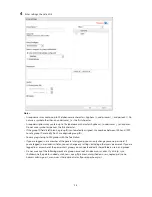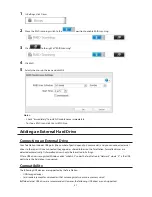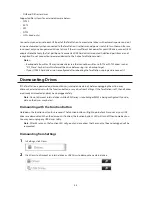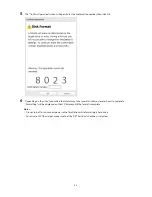
40
RAID 5
*
RAID 5 arrays are available for TeraStations with 3 or more hard drives. RAID 5 combines 3 or more drives into a
single array. The usable space is equal to the sum of the capacity of the hard drives minus the capacity of one drive.
For example, if 4 drives are combined into a RAID 5 array, the usable space is the sum of 3 drives. If one drive in the
array is damaged, you can recover data by replacing the damaged drive. If two or more drives are damaged at the
same time, your data is lost.
RAID 51
**
RAID 51 arrays are available for TeraStations with 6 or more hard drives. In this mode, two RAID 5 arrays are
combined into a RAID 1 array. The total usable space for 6 drives in a RAID 51 array is 2 x the capacity of the smallest
drive. For 8 drives, the total usable capacity is 3 x the capacity of the smallest drive.
RAID 50
**
RAID 50 arrays are available for TeraStations with 6 or more hard drives. In this mode, two RAID 5 arrays are
combined into a RAID 0 array. The total usable space for 6 drives in a RAID 50 array is equal to 4 x the capacity of the
smallest drive. For 8 drives, the total usable space is equal to 6 x the capacity of the smallest drive.
RAID 10
*
RAID 10 arrays are available for TeraStations with 4 or more hard drives. In this mode, mirrored pairs of drives in RAID
1 arrays are combined into a RAID 0 array. The usable space is equal to the capacity of the smallest drive multiplied
by the number of hard drives divided by 2.
RAID 1
Combines 2 or more drives into a mirrored array. The available space in the array is the capacity of a single drive.
Identical data is written to each drive. If a drive is damaged, data can be recovered by replacing the damaged drive.
As long as one drive in the array remains undamaged, all data in the array can be recovered.
RAID 0
Combines 2 or more hard drives into a single array. The usable disk space is the total space of all drives used. This
simple RAID mode offers faster performance than RAID modes that include parity. If a single drive in the array fails,
then all data in the array is lost.
JBOD
This mode uses the hard drives inside the TeraStation as individual drives. The disk space you can use is the total
capacity of all drives in the TeraStation. If any drive is damaged, then the data on that drive is lost.
*Available for 8-drive, 6-drive, 4-drive models.
**Available for 8-drive and 6-drive models.
***Available for 8-drive models only.
Working with RAID Arrays
To change RAID settings, navigate to
Drives
-
RAID
in Settings.
Summary of Contents for TeraStation WSS 5000
Page 10: ...9 Chapter 1 Installation Diagrams TS5800D TS5800DN TS5800DWR µ µ µ µ TS5600D TS5600DN µ µ µ µ ...
Page 60: ...59 6 Click Edit under NAS Volume 7 Click Create Volume ...
Page 88: ...87 2 Click to the right of Backup 3 Click List of LinkStations and TeraStations ...
Page 90: ...89 3 Click Create New Job Note Up to 8 backup jobs can be configured ...
Page 104: ...103 18Click Time Machine ...
Page 105: ...104 19Click Select Backup Disk 20Select the TeraStation then click Use Disk ...
Page 116: ...115 3 Click Create New Job ...
Page 131: ...130 9 Click Open Squeezebox The Squeezebox s settings will open ...
Page 136: ...135 4 Open the License tab then click Activate Free License To deactivate the license click ...
Page 138: ...137 3 Click Next 4 Click Find Cameras ...
Page 144: ...143 2 Select the search criteria on the left side of the search screen then click Search ...
Page 145: ...144 3 The search results are displayed Click a thumbnail to start the media viewer ...
















































